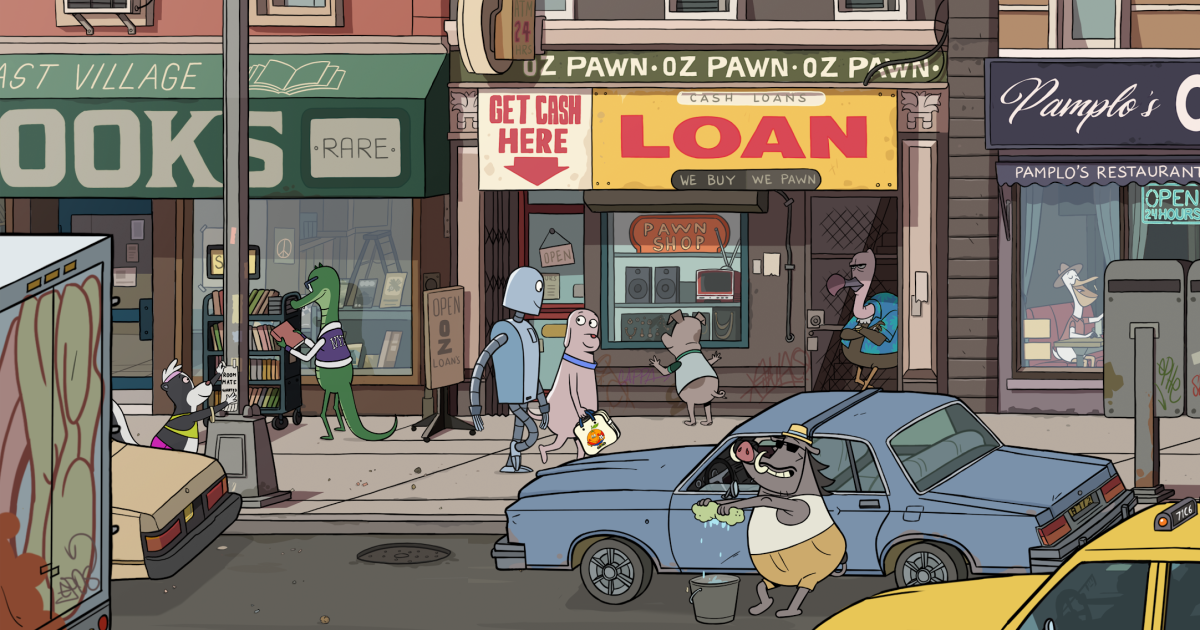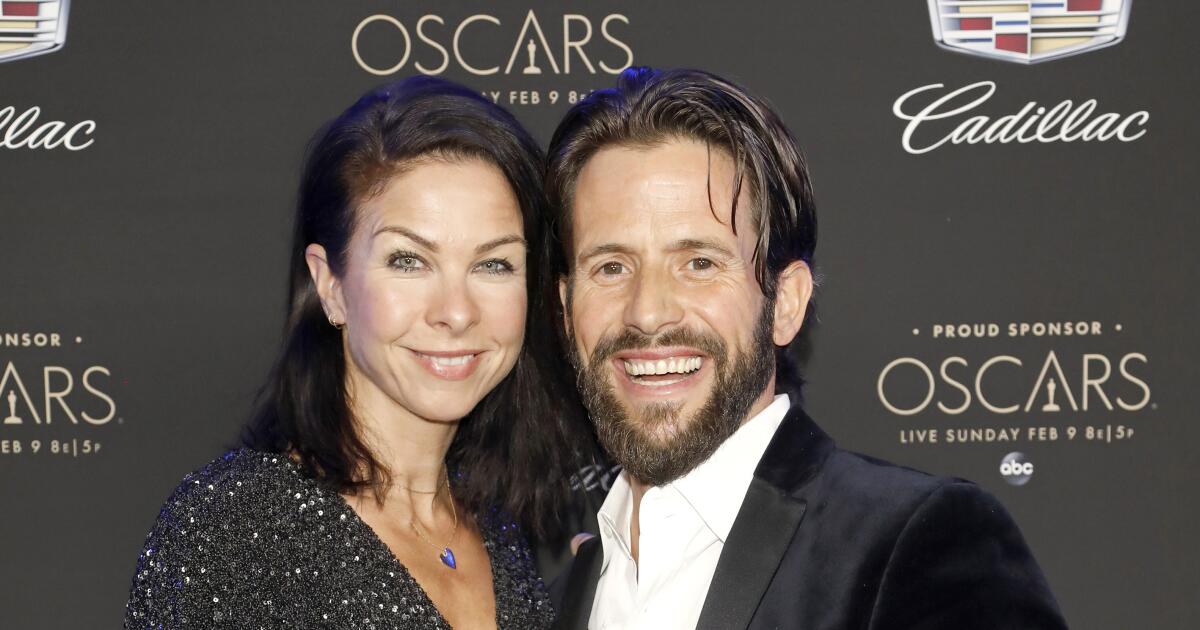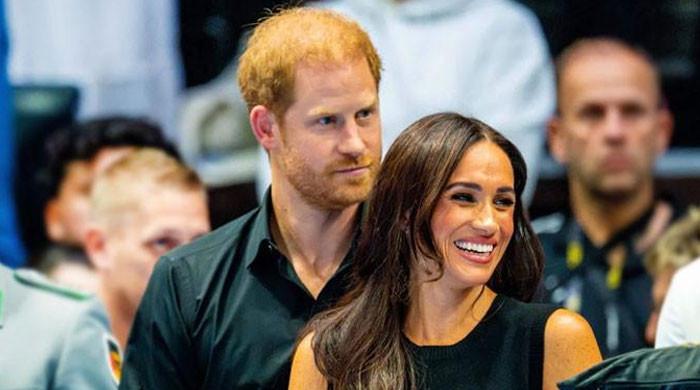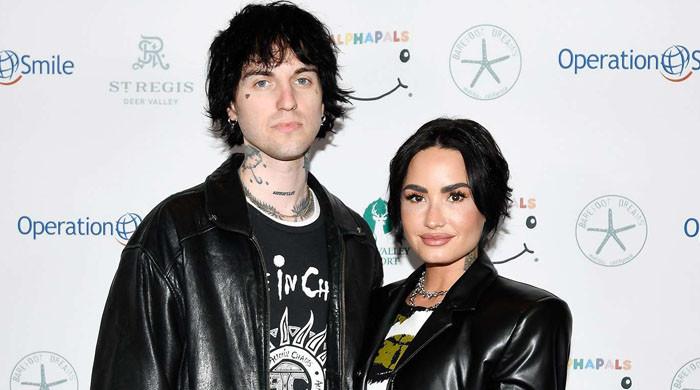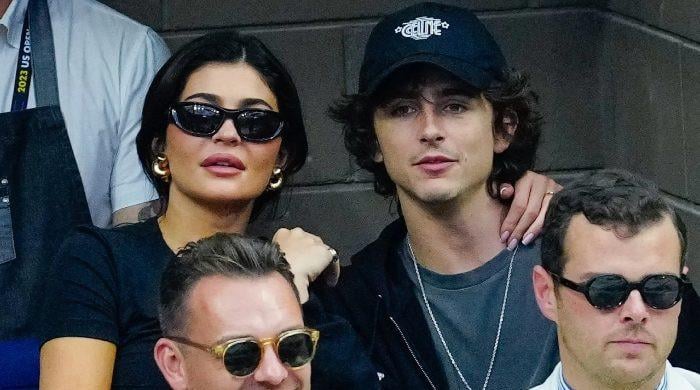“It's pure cinema,” Guillermo del Toro tells me over email, “moving and beautiful, and because it's animation, it's absolutely a creation and not a recreation.”
The revered Mexican director and staunch animation advocate is excited about “Robot Dreams,” a hand-drawn urban fable that received a surprise Oscar nomination earlier this year. Del Toro won that Academy Award in 2023 for his heartbreaking World War II-set “Pinocchio,” co-directed with the late Mark Gustafson.
Without a single line of spoken dialogue, “Robot Dreams,” opening in Los Angeles on Friday, follows a touching friendship from its sunny dawn to a bittersweet twilight. Feeling the weight of loneliness, Dog, a chubby canine living in a kinetic and chaotic 1980s New York, buys a robot friend on a late-night infomercial. Together, the fast friends have fun around town until one fateful day, Robot is stranded on Coney Island in late summer.
With the beach closed for the season, Dog spends the next few months trying to break in to rescue him, while Robot dreams fantastically of returning to his friend.
Del Toro describes the film as “a very deep and very human story about love, loss and life after that. Adult, emotionally, but charming and whimsical, visually and tonally.”
A scene from the animated film “Robot Dreams.”
(Arcadia Motion Pictures, Lokiz Films, Noodles Production, Les Films du Worso)
The film's Spanish writer-director Pablo Berger, in his first foray into animation, reimagined the friendship from a 2007 graphic novel by American artist Sara Varón. “I never thought I would make an animated film, although I am a lover and great defender of animation,” Berger, 61, says in Spanish at a Beverly Hills hotel during Oscar week.
Months later, he remembers the experience of attending the Academy Awards as a “roller coaster in a theme park,” and remembers feeling elated when he lost the trophy that night to Japanese master Hayao Miyazaki’s “The Boy and the Heron.” (Berger had believed “Spider-Man: Across the Spider-Verse” would be a safe bet.)
Hollywood has already approached him with offers, both in animation and live action, but as a director who likes to “cook slowly,” he is in no rush. Berger has only made four feature films in 20 years.
Two decades ago, when Berger's daughter was about 2 years old, he began collecting graphic novels without dialogue. “She wanted to share my love of reading and she didn't know how to do it yet,” he recalls. He currently has about 100 wordless graphic novels.
Aware that Varon’s “Robot Dreams” fit the bill and had been a hit in the United States, he ordered a copy in 2010 to add to his collection. “It became one of my favorites,” she says.
By then, almost a decade had passed since his 2003 debut, “Torremolinos 73,” an irreverent sex comedy about a salesman and his wife who find a new career in pornographic films. It earned Berger a pair of nominations for the Goya Awards, Spain's Oscars. And before that great success, he had already been a professor at the New York Film Academy and received an Emmy nomination for the short film “Truth and Beauty.”
But years later, he reread “Robot Dreams” to pass the time, and something new happened: an accumulation of personal experience that deepened the story. Berger replaced the people in his life with Dog and Robot: his parents had died and his relationship with one of his closest friends had deteriorated. When he reached the end, his eyes filled with tears.
“I thought, 'If this happened to me reading this graphic novel, how wonderful would it be if I made a movie and what happened to me happens to the viewers too?' ” he remember.
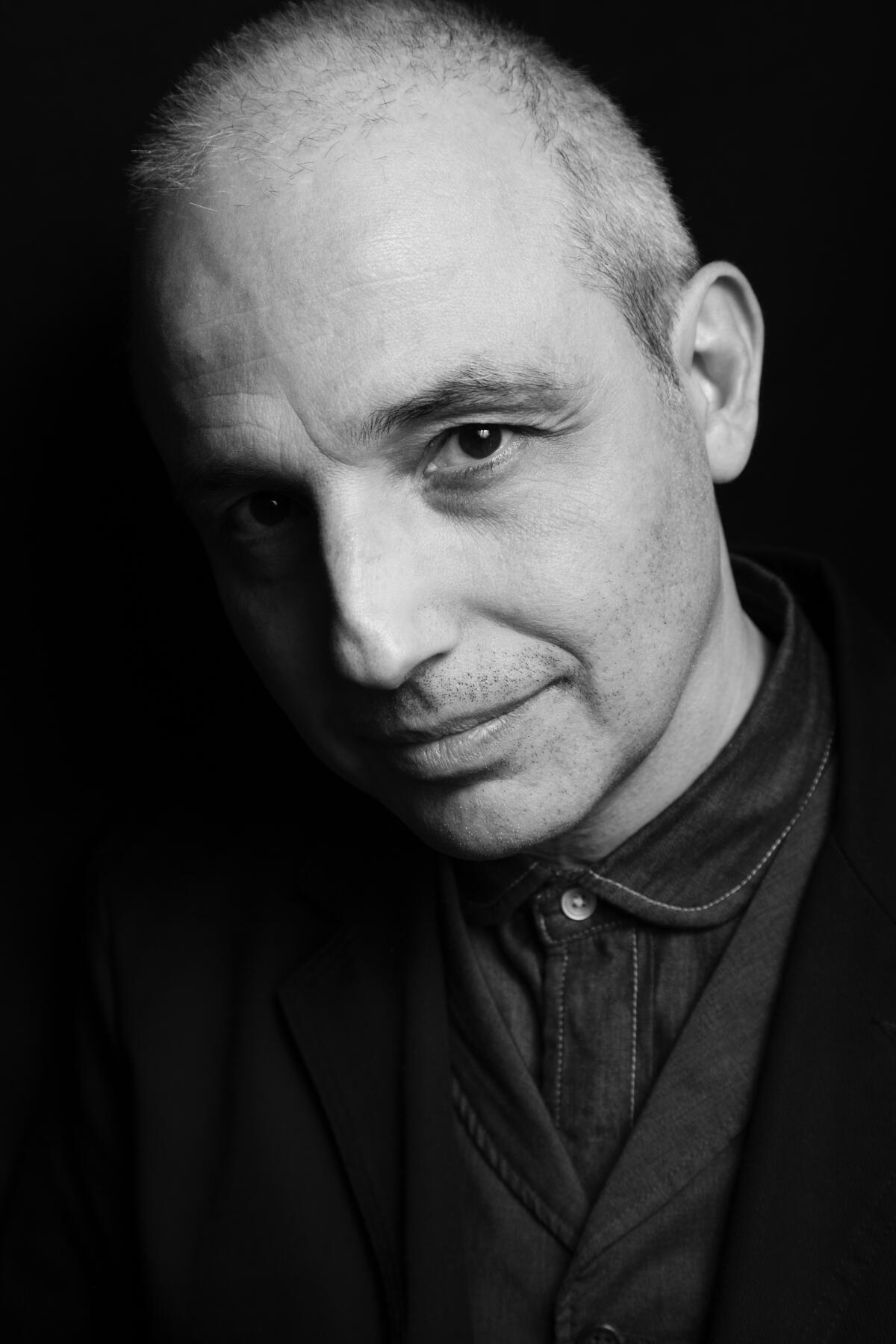
Filmmaker Pablo Berger, director of “Robot Dreams”.
(Daniel Alea)
“I had been doing stories with happy endings and a friend told me it was really predictable,” says graphic novelist Varon, 53, over Zoom. “I decided it was going to be a story with no happy ending about a friend who accidentally betrays another friend.”
“Robot Dreams” was his first book, which took a while to germinate. He originally created the Robot and Dog story to be part of an anthology of robot-related stories, but he missed his deadline. Not trusting his dialogue writing skills, Varon decided to make it purely visual. And when editors asked for a longer story, Varon assembled several Dogs and Robots vignettes.
He has nothing but positive things to say about Berger's vision of his story. “It definitely left his mark,” Varon says, praising the added humor and detailed backgrounds, which are much more minimalist in his original drawings.
“It was very important to me that Pablo wanted to do it in 2-D,” he says, “because I grew up in the '70s and I loved 2-D animation like 'Underdog' or 'Tennessee Tuxedo.' “
The now-defunct animation team Blue Sky Studios, the company behind the “Ice Age” films, approached Varon with interest in adapting “Robot Dreams.” In retrospect, he is glad that the offer ultimately fell through. “I wasn't a big fan of his style,” he recalls. “I would have been a lot more worried.”
Varon gave Berger carte blanche to transform and develop his concept and characters. “I wouldn't have made the movie if I hadn't had creative freedom,” Berger says. “Sara was incredibly generous.”
“The first time I saw the movie I thought: it's really not my story anymore. Now it is Pablo's story,” adds Varon.
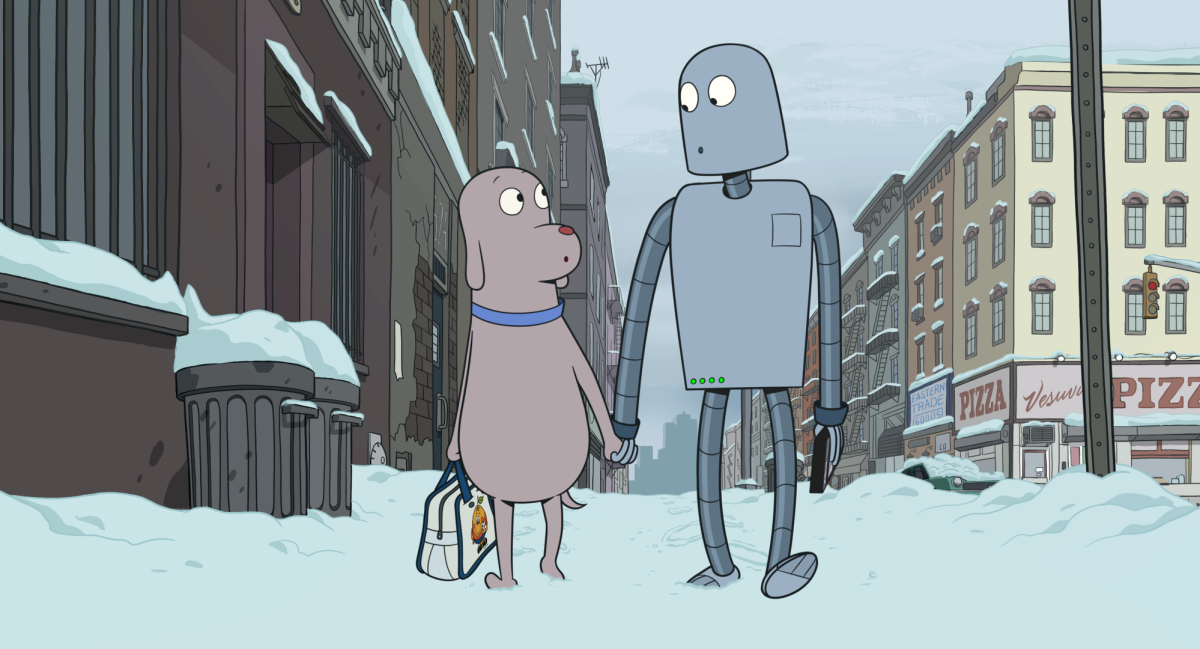
A scene from the animated film “Robot Dreams.”
(Arcadia Motion Pictures, Lokiz Films, Noodles Production, Les Films du Worso)
One of the first but significant changes he made was to set the film in New York City, where he lived during the '90s while studying film at New York University on a scholarship. (The graphic novel does not have a specific location). Unable to physically travel to the US to conduct research during pre-production due to the COVID-19 pandemic, Berger relied on old photographs taken by producer and his life partner Yuko Harami.
“I don't feel any nostalgia, but there is an element of nostalgia for the New York I knew, for that young man who becomes a film director in New York,” Berger says.
Berger came to the world of animation with understandable trepidation, relying on an art department, led by José Luis Ágreda, after working on many projects with teams of people: photography, production design, makeup and hair departments. He drew on his experience working with actors.
“The big difference is that, in a live-action film, the director has a super intimate relationship.
relationship with the actors and, in an animated film, the relationship that a director has is very intimate with the animators,” explains Berger.
Throughout production, animation director Benoît Féroumont served as an interpreter between Berger and the animators. Féroumont, a veteran in the field, worked on the 2003 Oscar-nominated “The Triplets of Belleville,” another film without dialogue.
“I wanted to direct cartoon characters that gave me performances full of truth, full of emotion, full of sincerity, where they didn't overact,” says Berger.
The key, as when working with real actors, was in what their eyes conveyed. “I became obsessed with the eyes of my characters, with their pupils, with the intention of their gaze,” says Berger.
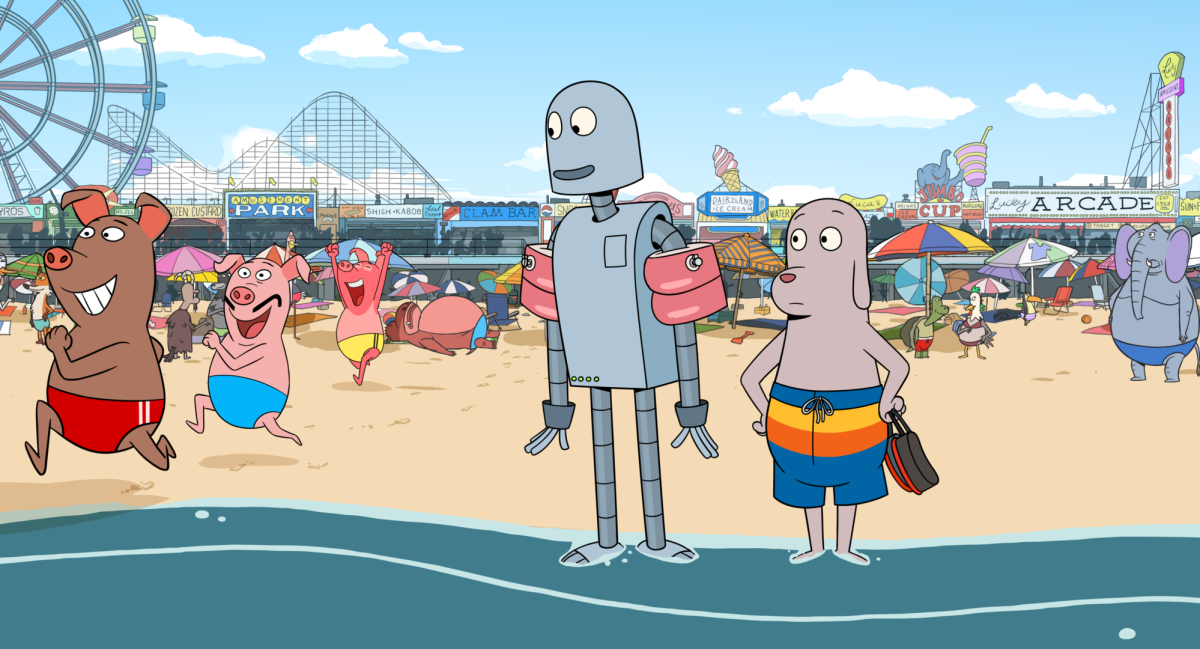
A scene from the animated film “Robot Dreams.”
(Arcadia Motion Pictures, Lokiz Films, Noodles Production, Les Films du Worso)
Berger also knew that his homage to New York needed New Yorkers. In the film version of “Robot Dreams,” the background characters, all anthropomorphized animals, have different appearances: a lion with a boombox, a dachshund who sells sausages, and some mischievous rabbits. If you pay close attention, you can see that everyone is involved in their own lives, traveling to places, solving crises, and having fun. A group of dedicated designers created over a thousand different creatures to populate the city.
Amid all the changes Berger implemented, the only unchanging aspect of Varon's pages was its heartbreaking and resonant ending. Some people, he suggests, are not meant to remain in our lives forever, but their effect lingers long after they are gone.
“For me, the only reason to make this movie was the ending,” Berger says.
“I'm glad Pablo didn't change the ending; another studio might have said, 'Let's give it a happy ending,'” Varon adds.
Berger believes that the public's strong emotional reaction to his film is largely due to his silence, which allows his simple drawings to become symbols. “The viewer can turn these representations into whoever they want: a friend, an ex-lover, a father,” says Berger, who believes that every deep relationship has an iconic song.
For Robot and Dog, that song is Earth, Wind & Fire's funky, danceable 1978 single, “September.” The first time we hear the song it comes with a scene of them skating in Central Park, a time when they were really happy together. The melody then becomes a motif heard when Robot whistles it and then a piano version.
While Berger had included “September” in the first draft of the script, it wasn't until much later that he realized that the lyrics “Do you remember / the night of September 21?” I had a chance connection with him. Berger's daughter was born on September 21. The song reinforces the central theme of the film: memory.
“Selective memory is a balm for coping with loss,” says Berger. “It allows us to preserve those wonderful memories, which keep our loved ones who are no longer with us alive.” By honoring her own lost connections and separations, she has made a film that is, in itself, almost unforgettable.

